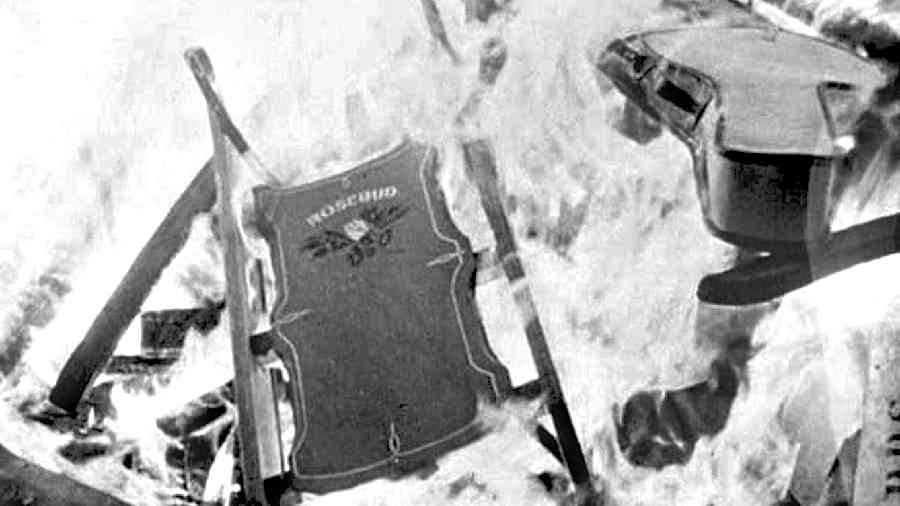Citizen Kane, Orson Welles’s iconic film produced in 1941, holds tremendous relevance for young Indians and their parents, especially those with overarching expectations of their children. This film, an all-time modern classic, comprises two different strands. One highlights the very public, successful life of the adult Kane and the opportunities available in American society. The second explores his early days, depicting Kane’s intense craving for his lost childhood.
The film reveals modern life — American life in particular — through the life of Charles Foster Kane. Critics often praised the movie for its innovative and creative narration. The brilliance of the narration lies in how it successfully keeps the truth from the characters in the film while, at the same time, revealing it on screen for the audience. This is achieved through an intricate juxtaposition of the past and the present with the skilful use of flashbacks.
Citizen Kane shares similarities, especially in the narration style, with another iconic film, Akira Kurosawa’s Seven Samurai (1954). Both movies ensure that the different perspectives are kept separate from each other so as not to reveal the truth to the characters.
None in the film knows what Kane was looking for on his deathbed when he uttered the word, “Rosebud”. Thus, his last word, “Rosebud”, sets the stage for the quest in the film. The task of discovering the meaning of this word falls upon the newsreel reporter, Jerry Thompson. He relentlessly tries to question Kane’s friends and associates, including his second wife. His quest leads him to read about Kane in the private papers of the late banker, Walter Parks Thatcher. Many years ago, Thatcher had been made guardian to a young Kane and put in charge of his education by his mother, Mary Kane. In these papers, Thompson learns that Thatcher brought Kane to the city from the Colorado boarding house. Despite these persistent efforts, Thompson fails to decipher the meaning of ‘Rosebud’.
In addition to the brilliant narration, the use of the two life phases — childhood and adulthood — in a symbolic manner is remarkable. The outstanding feature of the film is its success in isolating one phase of Kane’s life from the other. All those associated with his childhood, like his parents, are deliberately kept away from his adult life and do not make an appearance in the latter phase of his life as a successful, well-respected citizen.
Thompson is a precarious bridge between these two phases. When, as a boy, Kane’s parents introduce him to Thompson and inform him that he is to go away from home, leaving Colorado for the city, a distraught young Kane thrashes Thompson with the sled he is playing with. But, like others in the film, Thompson fails to recognise the importance of childhood in Kane’s life. In a similar vein, after Kane’s death, his staff, unaware of its significance, throws the sled, on which the eight-year-old Kane was playing on the day he was taken away from his parents, along with the discarded furniture into the furnace. Thus, the significance of the dying man’s last words remains hidden from the characters in the film. The film ends with the sled in flames; however, the trade name of the sled, ‘Rosebud’, becomes prominently visible only to the viewers through the flames.
Viewed through the artist’s gaze and that of the characters in the story, the adult Kane’s fortunes seem comparable only to Genghis Khan’s. However, outside of these inside perspectives and right at the borders of his adulthood lurks Kane’s childhood, which is exclusively communicated to the audience. The sled symbolises Kane’s yearning for his lost childhood. It remains an unfulfilled quest despite his tremendous achievements and recognition in society. This highlights the limits of modern life and is a searing critique. Should we embrace modern life even if it demands drastic compromises with our past, leaving us disconnected from our childhood? As with Kane, one may long to reconnect with one’s younger days but in vain.
Or one might choose to explore alternatives where it is possible to establish a continuity between childhood and adulthood, with people and places of varying degrees. This could have lessened Kane’s sorrow, even if it involved compromising the achievements of his adult life. Kane’s life can be compared to a plane that takes off but, once in mid-air, is no longer able to land. In contrast, the alternative can be somewhat like the relationship between the migratory cranes and pelicans that visit the Bharatpur bird sanctuary.
Raj Kapoor’s famous film, Mera Naam Joker, brilliantly evokes this alternative approach. The toy clown that Raju inherited from his father plays an important symbolic role in establishing a continuity between his past and the different phases of his adult life, especially, through his ailing mother. Unlike the discontinuity between childhood and adulthood, Raju’s toy clown moves from Mary, his teacher, to Mareena, his circus-mate, and Meena, his artist companion, like a baton in a relay race. This is symbolic of revisiting the past, each time with growing understanding and maturity.
The greatness of Citizen Kane lies in its delicate, poignant presentation of contrasting perspectives on two very different phases of Kane’s life. The two perspectives in Welles’s film along with the alternative in Kapoor’s hold an important lesson for Indian parents who ruthlessly push their children to pursue success, often at the cost of their child’s desires or the loss of a joyous, carefree childhood.
A. Raghuramaraju teaches Philosophy at the Indian Institute of Technology Tirupati











